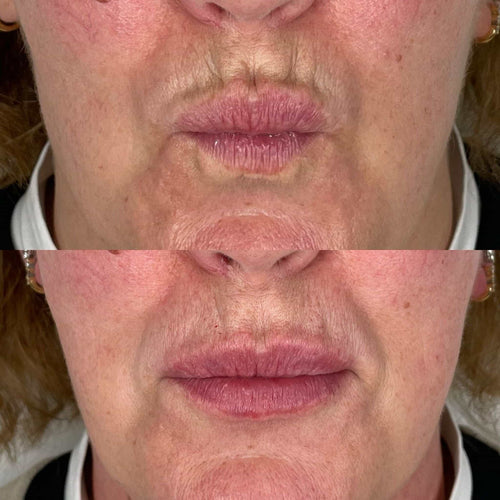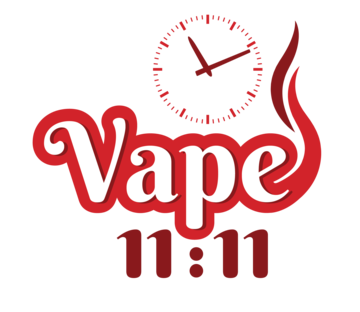How Long To Wait For More Lip Filler
Consult with Dr. Laura Geige for Dermal Fillers Today

Factors Influencing Healing Time
Individual Variation
Healing time after lip filler injections can vary greatly from person to person. Multiple factors contribute to this individual variation, influencing how quickly your lips will return to their normal appearance and feel.
Genetics play a significant role. Some individuals naturally heal faster than others due to their genetic predisposition.
**Skin Type** also matters. Those with thicker skin tend to heal quicker than those with thinner skin.
The *amount of filler* injected can affect healing time. Larger injections generally take longer to settle and for swelling to subside.
Injection Technique** employed by the practitioner is crucial. A skilled injector can minimize bruising and trauma, promoting faster healing.
**Lifestyle choices** impact recovery. Factors like smoking, alcohol consumption, and certain medications can slow down the healing process.
**Sun exposure** can irritate newly injected areas and hinder healing. It’s essential to protect your lips from direct sunlight during the recovery period.
Proper aftercare** is paramount. Following your practitioner’s instructions regarding ice packs, avoiding touching or rubbing your lips, and using recommended products can significantly accelerate healing.
**Pre-existing medical conditions**, such as diabetes or autoimmune diseases, can affect wound healing and may lead to a longer recovery time.
It’s important to remember that everyone heals differently. While some individuals may see minimal bruising and swelling within a few days, others might experience noticeable inflammation for up to a week or more.
If you have any concerns about your healing process, consult with your injector for personalized advice and reassurance.
Book a Dermal Filler Consultation at It’s Me and You Clinic with Dr. Laura Geige
Injection Technique
Healing time after lip filler injections varies greatly depending on several factors.
Book a Dermal Filler Consultation with Dr. Laura Geige Today
One major factor is the individual’s own healing capabilities, which can be influenced by age, overall health, and skin type.
Younger individuals with healthy skin tend to heal faster than older individuals or those with pre-existing skin conditions.
Injection technique also plays a crucial role in determining healing time.
A skilled injector who uses precise placement and minimal trauma will minimize swelling and bruising, leading to quicker recovery.
The type and amount of filler used can also impact healing.
Hyaluronic acid fillers, for instance, tend to be more quickly absorbed by the body than other types of fillers, resulting in shorter recovery periods.
Larger injections or treatments involving deeper layers of the lips may take longer to heal.
Other factors that can affect healing time include sun exposure, smoking, and certain medications.
It’s essential to avoid direct sunlight on the treated area for several weeks after injection as UV rays can irritate the skin and prolong healing.
Smoking constricts blood vessels, which can hinder the delivery of oxygen and nutrients necessary for tissue repair, leading to slower healing.
Some medications, such as blood thinners, can increase bruising and swelling, potentially extending recovery time.
Following your injector’s aftercare instructions diligently is crucial for optimizing healing.
This typically involves applying cold compresses to reduce swelling, avoiding strenuous activity, and refraining from touching or picking at the injection sites.
Type of Filler
Numerous factors influence the healing time after lip filler injections.
**Skin Type:** Individuals with **oily** skin typically heal faster compared to those with **dry** or **sensitive** skin.
Injection Technique:** Precise and gentle injection techniques minimize trauma to tissues, promoting quicker healing.
**Filler Type:** Different fillers are composed of various substances. Hyaluronic acid-based fillers, like Juvederm and Restylane, tend to be absorbed by the body more readily than permanent fillers, leading to faster healing times.
Product Concentration:** Higher concentrations of filler may require longer healing periods as more material needs to be integrated into the surrounding tissues.
**Placement Location:** Areas with greater blood flow, such as the upper lip, generally heal faster than areas with less blood supply, like the lower lip.
**Individual Healing Capacity:** Genetic factors and overall health play a role in how quickly someone’s body heals.
Sun Exposure:** Excessive sun exposure can prolong healing by increasing inflammation.
**Lifestyle Habits:** Smoking, alcohol consumption, and inadequate sleep can hinder the healing process.
Following post-procedure instructions diligently is crucial for optimal healing and minimizing complications.
This includes avoiding touching or rubbing the treated area, applying ice packs to reduce swelling, and staying hydrated.
Consulting with a qualified injector is essential for determining the appropriate type and amount of filler for your desired results and understanding individual healing timelines.
General Timeline
Initial Swelling and Bruising
General timeline for swelling and bruising after lip filler injections typically lasts between 2-7 days, although individual experiences can vary.
Initial swelling is usually most pronounced within the first 24-48 hours post-treatment. During this period, expect your lips to appear visibly plumper than expected, as excess fluid accumulates in the injection sites.
Bruising may also occur around the injection area, appearing as reddish or purplish discoloration. This is a common side effect due to minor blood vessel disruption during the injection process. Bruising tends to peak around 2-3 days post-treatment and gradually fades within a week.
By day 7, most swelling and bruising should have significantly subsided, allowing for a clearer view of your final lip filler results.
It’s important to note that individual healing times can differ based on factors like injection technique, the type and amount of filler used, personal metabolism, and overall health.
Resolution of Inflammation
Inflammation following lip filler injections is a normal part of the healing process. It occurs as your body responds to the introduction of the filler, working to integrate it with existing tissue.
The timeline for resolution of inflammation varies from person to person and depends on factors such as the type of filler used, the amount injected, individual healing rates, and pre-existing skin conditions.
Generally, you can expect noticeable swelling to subside within a few days.
Some mild puffiness may persist for up to 1 week, gradually decreasing over time.
Bruising, another common side effect, typically resolves within 7-10 days.
It’s important to follow your injector’s post-procedure instructions carefully, which may include applying cold compresses, avoiding strenuous activity, and refraining from touching or massaging the treated area.
While most people experience minimal discomfort, it is crucial to contact your injector if you notice any signs of infection, such as redness, warmth, or increased swelling beyond the expected timeline.
Determining when it’s safe to get more lip filler depends on complete resolution of inflammation and the overall healing of the treated area.
Most injectors recommend waiting at least 2-4 weeks after your initial injection before considering further treatment.
This allows time for any residual swelling or bruising to fully subside, ensuring optimal results with subsequent injections.
Optimal Results Visibility
Determining the optimal timing for repeat lip filler appointments depends on several factors, including the type and amount of filler used, individual metabolism, and desired results.
Generally, most fillers start to lose volume after 3-6 months. This timeframe can vary significantly, with some individuals noticing a noticeable reduction in fullness sooner or later.
To maintain optimal lip enhancement, repeat appointments every 4-6 months are often recommended.
However, it’s crucial to consult with a qualified and experienced injector who will assess your unique circumstances, including previous treatments, skin type, and desired outcome, to determine the best schedule for you.
It’s important to note that over-filling lips can lead to unnatural-looking results and potential complications. Following your injector’s recommendations for touch-up appointments is essential for achieving a balanced and natural appearance.
Signs of Complications Requiring Medical Attention
Excessive or Persistent Swelling
Excessive or persistent swelling after lip fillers is a common concern, but it’s important to differentiate normal swelling from complications that require medical attention.
Here are some signs of complications requiring immediate medical attention:
• **Severe Pain:** While some discomfort is expected, severe pain that intensifies or doesn’t subside with over-the-counter pain relievers warrants a visit to your doctor.
•
**Inability to Move Lips Properly:** If you have difficulty speaking, smiling, or moving your lips normally, it could indicate swelling impacting surrounding muscles and nerves.
• Vision Changes: Swelling around the eyes or face that affects vision is a serious symptom.
• **Numbness or Tingling:** Prolonged numbness or tingling in the lips, mouth, or chin may signal nerve compression.
• **Skin Discoloration:** Unusually dark or bluish discoloration of the lips could indicate poor blood flow or an allergic reaction.
• **Fever:** A fever accompanied by swelling suggests a possible infection.
• **Pus Drainage: **Any discharge from the injection site, particularly if it’s yellow or green, is a sign of infection.
•
Uneven Results: While some asymmetry is normal, extreme unevenness or lumpy appearance might indicate improper injection technique.
**Persistent Swelling:** If swelling doesn’t start to subside within the expected timeframe (typically a few days to a week), or continues to increase after initial reduction, it’s important to seek medical advice.
Unexplained Pain or Discomfort
While lip filler treatments are generally safe, it’s important to be aware of potential complications that may require immediate medical attention.
Severe allergic reactions can occur, manifesting as swelling beyond the injection area, hives, difficulty breathing, or dizziness. These symptoms demand urgent medical care.
Excessive bleeding at the injection site, or prolonged bleeding lasting beyond a few hours after the procedure, warrants medical consultation.
Signs of infection such as redness, warmth, swelling, pus formation, or fever should not be ignored and require prompt medical evaluation.
Unexplained pain or discomfort that intensifies or doesn’t subside within a few days following treatment may indicate an underlying issue that needs medical attention.
Any asymmetry in the lips, such as one lip appearing larger than the other, should be reported to your injector promptly. This can often be corrected with minor adjustments but requires timely intervention.
Blurred vision or changes in eyesight after treatment are rare but serious complications that necessitate immediate medical attention.
Infection Signs
While most lip filler procedures are safe and have minimal side effects, it’s important to be aware of potential complications that may require medical attention.
Signs of *infection* can include:
* **Redness**, warmth, or swelling around the injection site that persists or worsens
* Pain, tenderness, or throbbing in the treated area
* Pus drainage from the injection site
* Fever, chills, or other signs of *infection* throughout the body
If you experience any of these symptoms, it’s crucial to seek immediate medical attention. An infection can quickly spread and cause serious complications if left untreated.
Other potential *complications* that may require medical attention include:
* Excessive bruising or bleeding
* Asymmetry or unevenness in the lips
* Numbing sensation that lasts longer than expected or spreads beyond the treated area
* Vision changes
If you experience any of these symptoms, consult with your doctor or the injector who performed the procedure. They can assess the situation and provide appropriate treatment.
Remember, it’s always better to err on the side of caution when it comes to your health. If you have any concerns about your lip filler results or potential complications, don’t hesitate to seek professional medical advice.
W1 Wellness Hopeless Book On the Carpet The CBD Consultancy Ayiti Natives
- Upper Face Anti Wrinkle Treatment Near Burstow, Surrey - January 5, 2025
- Skin Pen Microneedling Near Mitcham, Surrey - January 3, 2025
- Pyrophilia Fetish: The Erotic Fascination With Flames - January 2, 2025

